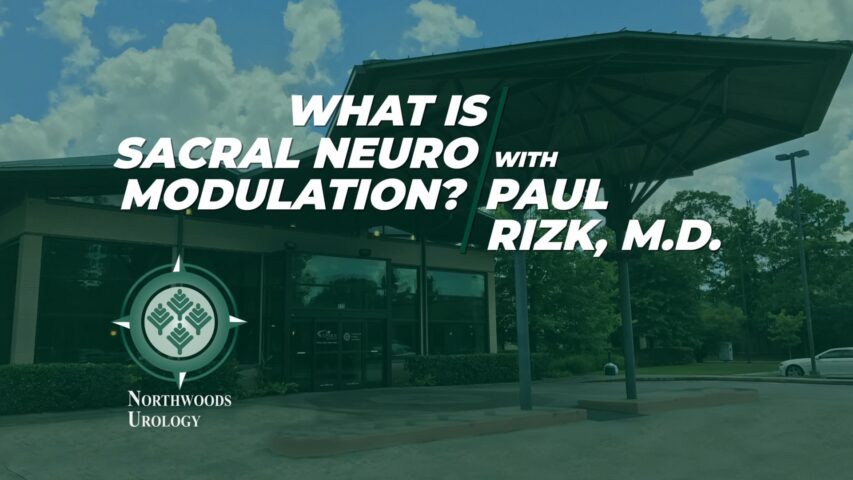Transcript of Video
Hi, my name is Dr. Paul Rizk. I’m one of the urologists here at Northwoods Urology, and today we’re going to be talking about sacral neuromodulation. So sacral neuromodulation is a therapy that we can offer our patients if they have symptoms of overactive bladder, symptoms of urinary retention, frequency, as well as occasionally, fecal incontinence.
So when we think about neuromodulation, we think about it as a treatment here in the urology space, namely for symptoms of overactive bladder, symptoms of urinary retention, and at times fecal incontinence. So before we delve deep into what sacral neuromodulation is, we need to talk a little bit about what overactive bladder is. So when we think about treating overactive bladder, we like to think of it as a sort of three-step process. Now there can be multiple steps within that, but essentially just to get a general idea of how it works.
The first therapies are behavioral. We think about limiting fluid intake, limiting spicy foods, and other little things to see if that can improve the symptoms of overactive bladder. When that fails, we go to second line therapies. These include medications, and there are a lot of them we can try to see if they work.
And when that fails, we enter the realm of third line therapies, and it’s in this space that sacral neuromodulation fits in. So what exactly is sacral neuromodulation? Essentially, if we think about overactive bladder, at times it can be due to an abnormal connection between the brain and spinal cord and the bladder. So the bladder is squeezing too much, so we’re going to the bathroom too much.
And the way we can try to fix that is by sort of fixing that connection between the brain, spinal cord, and the bladder. So the way we do that is we implant a small device, kind of like a pacemaker for the bladder. We put two very thin electrode, almost hair-like, in the spine to gently stimulate the nerve that feeds into the bladder. And it would hopes to have the neurological stimulation be more regulated.
The device that gets implanted is a small, almost quarter-size-like battery that we place in the right or left buttocks. The great thing about this therapy is that we don’t have to jump straight to the OR. We can do a trial run here in the office where we use X-ray and place these small electrodes and connect them to an external device that sits outside the body for two to three days to see if this therapy would even work for a patient. And if it does, then we know that the sort of the permanent device implant will work either the same or better usually.
So if you’re tired of your overactive bladder symptoms, you’ve tried a lot of medications and none of it’s really worked, come talk to one of us here at Northwoods to see if sacral neuromodulation is right for you. For more information on Northwoods Urology of Texas, please visit us online at www.northwoodsurology.com, or give us a call at (281) 404-3000.




